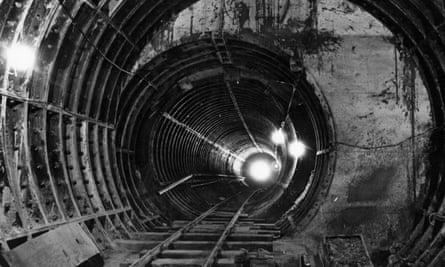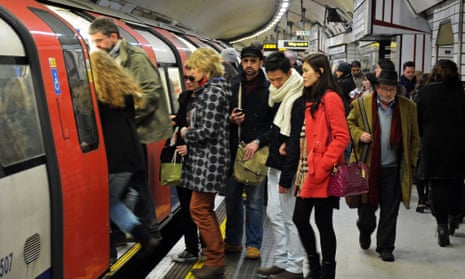Fresh concerns over air quality on the London Underground have been raised after researchers found that the concentration of particulate pollution in tube stations was up to 30 times higher than beside busy roads in the capital.
Air pollution experts have called for more analysis of the possible harmful effects of the underground’s particulates.
In a report, the Committee on the Medical Effects of Air Pollutants (COMEAP) warned Transport for London (TfL): “Given that there is strong evidence that both long- and short-term exposure to particle pollutants in ambient air are harmful to health, it is likely that there is some health risk.”
Tests found that the Northern Line had the highest concentration of PM2.5 (tiny particles linked to health problems) with the air on platforms at Hampstead station – the deepest on the tube network at 60 metres (200ft) below ground level – recording an average 492 micrograms per cubic metre (μg/m3) of air, compared with an annual average of 16 μg/m3 from a roadside monitoring site in the capital.
The hitherto unpublished findings from air quality experts at King’s College London were included in the report from COMEAP, commissioned by TfL.
It said the London Underground was affected more than any other subway system due to its age and the depths of its tunnels.
Passengers are exposed to the same concentration of particulates in an hour on the tube as they are during a full day above ground in ambient London air, the committee found.
For road users, it estimated that an equivalent bus journey, typically taking two and a half times as long, would expose a passenger to a third of the pollution.
The committee said further investigation was required into the toxicity of the dust breathed in by tube passengers, which is heavier and more metal-based than the smaller, carbon-based particles in the air above ground.
However, Prof Frank Kelly, chair of COMEAP, said people should continue to use the tube given the relatively short time spent underground and lack of evidence of harmful effects.

He said: “We’ve got all this information about the health impacts of the particles above the surface. Below ground, we know we have a higher mass but of a different type – we don’t yet have the research into the level of the toxicity, and hence the heath risk.
“You’re down there for a short period of time – passengers should just use the tube as usual until we have better understanding of the risks.”
TfL has accepted the recommendations in the report and will carry out further monitoring and testing of dust samples.
While the tube operates well within the Health and Safety Executive specified limits, it has set an “informal target” to limit exposure to dust.
It expanded its cleaning regime in 2017 with “magnetic wands” to reduce dust at 46 stations, but a specialist tunnel-cleaning train was scrapped as unviable in 2014.
Peter McNaught, director of asset operations at TfL, said: “We are committed to maintaining the cleanest air possible for our staff and customers when using the tube.”
Caroline Pidgeon, chair of the London Assembly transport committee, said more monitoring of dust and air pollution was vital: “We need to fully understand the health risk facing passengers and staff from being exposed to high levels of particulate matter.”
